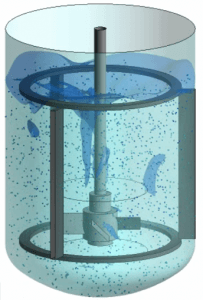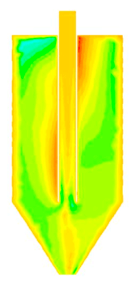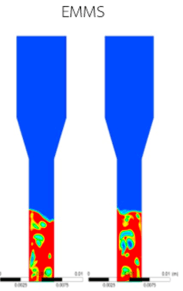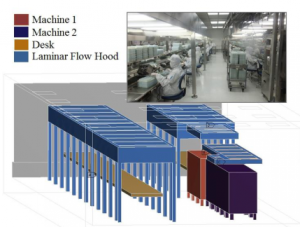
Introduction Multiphase Flow
The simultaneous flow with two or more phases is known as multiphase flow. Multiphase flows are commonly found in various industrial applications. These phases can be made up of just one chemical component (for example, water vapor and liquid water), or several different chemical components (for example, water vapor, liquid oil and solid catalyst). For the multiphase flow processes, it is crucial to investigate all the phases together in order to predict interphase behavior and optimize overall process efficiency. Multiphase flow processes can be investigated using computational fluid dynamics (CFD). Different interphase phenomena such as mass transfer, heat transfer, momentum transfer and other related phenomena, etc. in different process geometries and operating conditions can be accurately predicted and explored for understanding, improving and scaling-up the considered multiphase flow processes.
CFD case studies

For this work, CFD is used to improve liquid mixing and propose the new commercial reactor design (reactor diameter, impeller location, gas sparger type, etc.) within current operating condition as well as scaling up criteria.



From this research, we can elaborate the entire flow structure interaction based on current and extreme conditions to provide the best choice for improving and preventing unexpected situations. Nevertheless, the engineer can self-adjust the process to meet the high capacity without impacting the product quality and reliability. In term of safety concern also can reduce evacuated time

From this research, we can elaborate the entire flow structure interaction based on current and extreme conditions to provide the best choice for improving and preventing unexpected situations. Nevertheless, the engineer can self-adjust the process to meet the high capacity without impacting the product quality and reliability. In term of safety concern also can reduce evacuated time
We applied the CFD to solve the particle contamination and water condensation in cleanroom. The results showed temperature, pressure, particle trace, velocity. The results were analyzed to find.
The optimal condition to solve the problems. https://ieeexplore.ieee.org/document/7933973

The findings suggest that the ambient temperature, pressure, fraction of gases initialization, and droplet distribution size affect the soot particulate emission. In addition, both dynamics algorithms can reduce the calculation time and provide more details in Post Processing.






